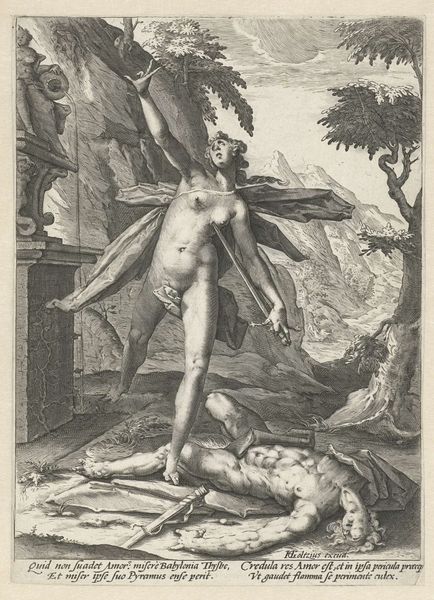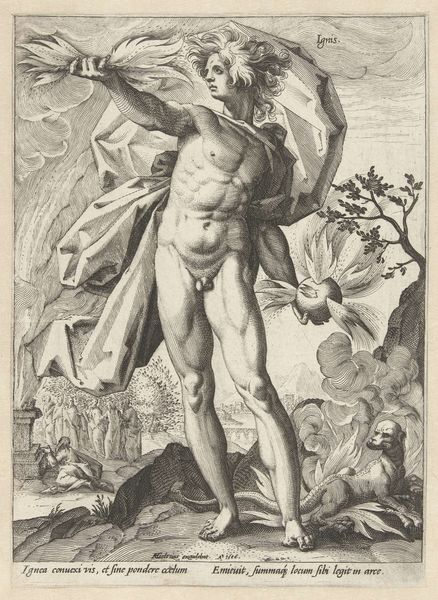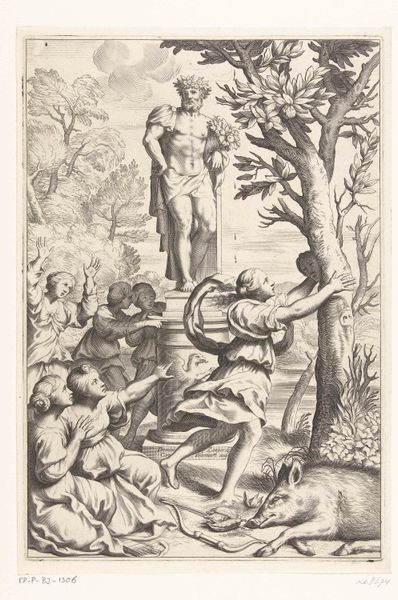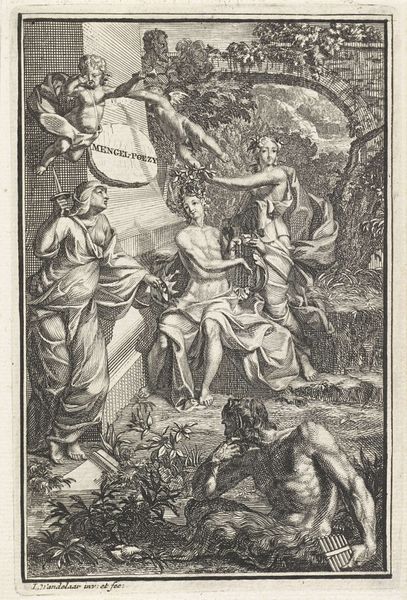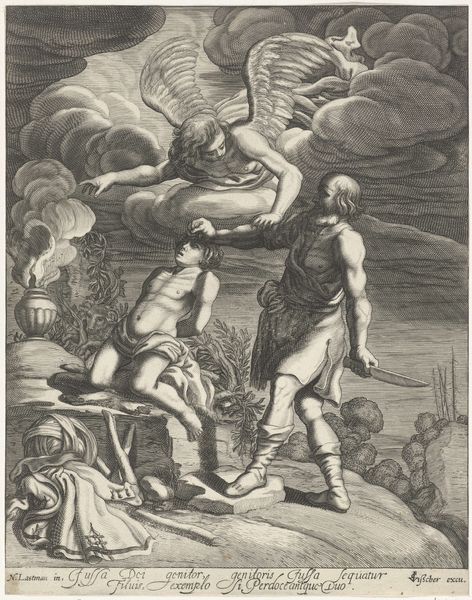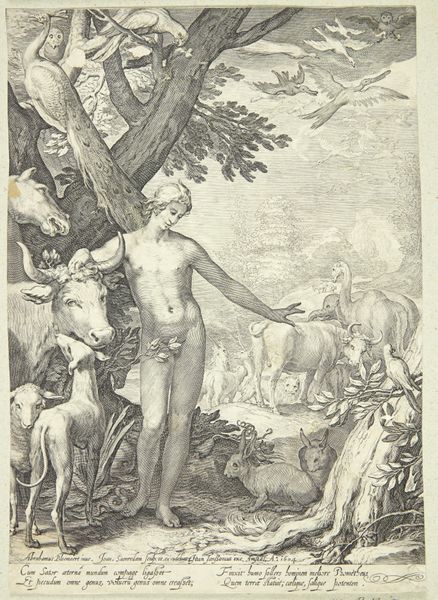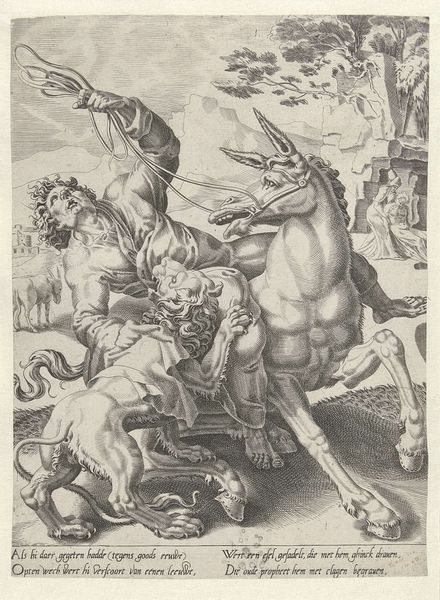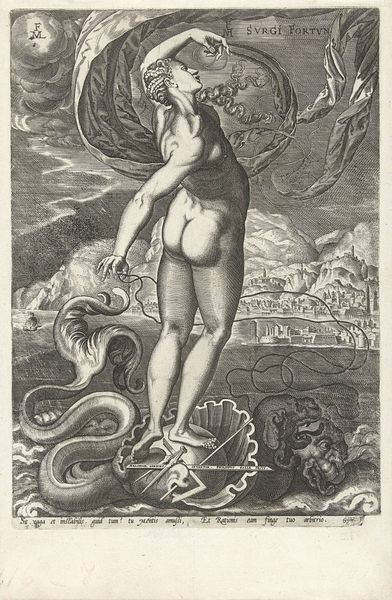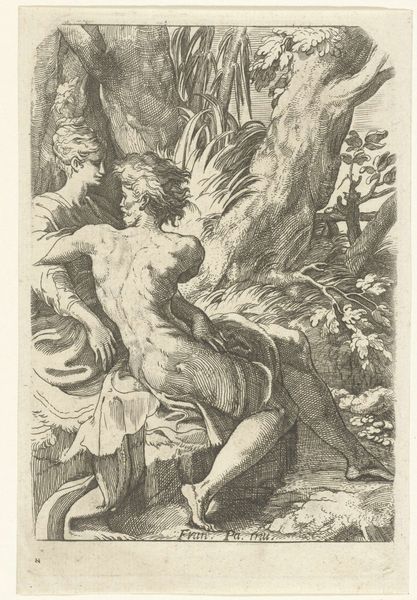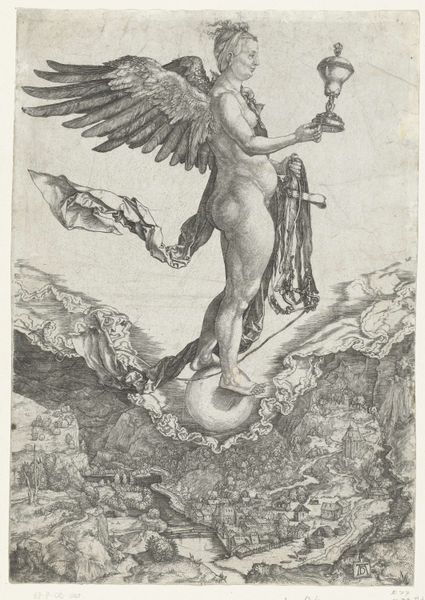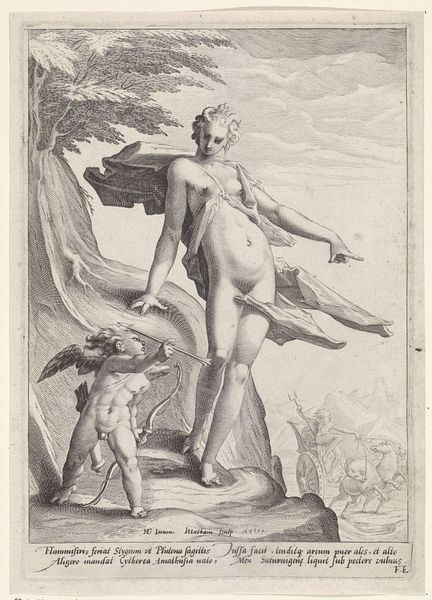
print, engraving
#
narrative-art
# print
#
mannerism
#
figuration
#
engraving
Dimensions: height 200 mm, width 152 mm
Copyright: Rijks Museum: Open Domain
Curator: Look at this Mannerist print, "De Mens moet zijn begeerten doden" ("Man Must Kill His Desires"), dating from around 1578-1582, an engraving made by Hendrick Goltzius. Editor: What a chilling first impression! The contorted bodies hanging from the crude crosses, combined with the stark monochrome, really communicate suffering. Is it religious? Curator: Most certainly. Notice how the composition divides into distinct zones: earthly toil and spiritual aspiration. We have an earthly plane densely detailed, where a man in the lower right literally pumps poison, symbolising base desires, into a crucified figure. Higher up, supported by clouds and light, another hag-like figure continues the torment. Editor: It's such a disturbing visual! I keep focusing on that hag on the cloud. Is she some kind of personification? Is she Death? It is difficult to tell. The whole scene reeks of moralistic punishment and mortification of the flesh, a very physical representation of spiritual struggle. Curator: Exactly. It encapsulates the era's deep investment in the power of allegory. These characters are symbolic representations of forces battling within the individual soul. Notice how the artist has inscribed phrases into the piece below. Editor: Yes, one is very much getting a sense of it through the work’s sharp linearity, the engraver’s sharp eye, and through these bodies: they exemplify this period's characteristic use of elongated form, an almost theatrical dynamism. And that idyllic town on the lower horizon contrasts to underscore what’s really going on in the foreground. Curator: This kind of graphic work circulated widely. It offered accessible spiritual lessons rooted in very tangible images. It gives weight to our experience of religious thought. It would have resonated powerfully during an era marked by the constant struggle between faith and human urges. Editor: In all its severity, Goltzius captured something essential, a permanent dialogue between our higher selves and the morass of desires that chain us. It makes the image eerily relevant even now, so long after the date. Curator: Precisely, reminding us of how moral lessons may endure while artistic approaches change over time.
Comments
No comments
Be the first to comment and join the conversation on the ultimate creative platform.
